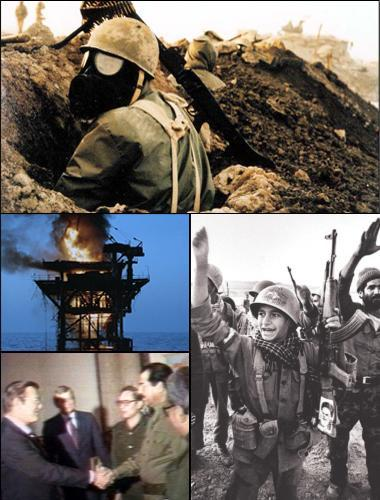
compiled by Jessica Knackstedt & TJ Austin
One of the main historical aspects of The Complete Persepolis is the Iran-Iraq War. To many readers the details of the war may not be common knowledge, so we have provided a section that should allow better understanding about the war, and the events leading up to it.

For a more detailed timeline on the key points in Iranian history and current events, please see this website:
{Iranian Timeline at BBC.com}

For more in depth information on both countries involved, please click here:
{Iran at History.com}
{Iraq at History.com}
{Iran-Iraq War at History.com}
On September 22, 1980, Iraq invaded the Iranian border, but bombings began earlier that month. The war was over the oil-rich land in the area of Khuzestan in Iran. When invaded, Iran was taken completely by surprise. However, in December, Iraq was not able to advance because of strong Iranian forces. The Iranian leader, Ruhollah Kholmeini, who had great hatred towards the leader of Iraq, Saddam Hussein, continued the war onto Iraqi soil.
Both armies used brutal tactics, Iran grabbed young boys off the streets and threw them in the first line to meet head on with trained Iraqi armies. The Iraqi army used chemical warfare against their opponent and any Kurdish civilians that were thought to be siding with the enemy. Because both nations were so heavily invested in oil, exports and trading were down during this time. Iraq had strong allies such as the Soviet Union and the United States. Iran’s allies were Libya and Syria. The fighting continued into the mid-1980’s, but no progress was made on either side.
By August 1988, The United Nations convinced Iran to sign a cease-fire, but the damage was already done. Iran suffered the most losses, but soldier and body counts are unknown on both sides. Total counts have reached up to 1,000,000,000, but that number could be doubled. In 1990, Iran and Iraq began restoring diplomacy, but prisoners were continued to be returned until 2003.